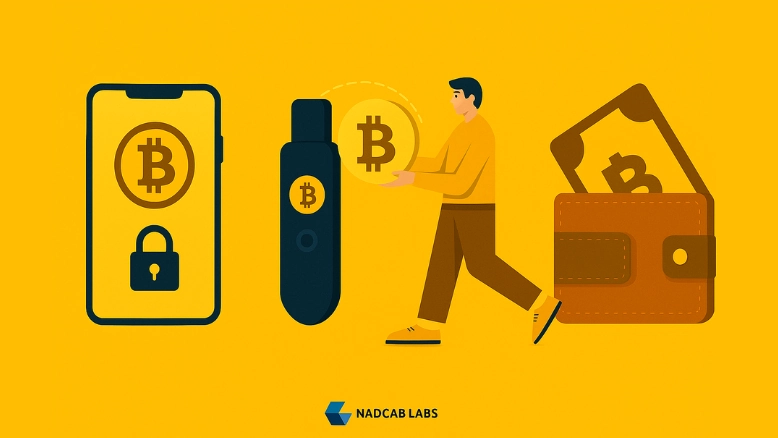
In the rapidly evolving world of cryptocurrencies, businesses are looking for efficient ways to enter the market without reinventing the wheel. One of the smartest moves is creating a whitelabel blockchain wallet platform. This approach allows companies to offer secure and branded digital wallets without starting from scratch. In this guide, we’ll explore what a whitelabel blockchain wallet platform is, its benefits, key features, and the steps to develop one successfully.
What is a Whitelabel Blockchain Wallet Platform?
A whitelabel blockchain wallet platform is a ready-made digital wallet solution that businesses can customize and brand as their own. Instead of spending months building a wallet from the ground up, companies can leverage these platforms to offer users a reliable way to store, send, and receive cryptocurrencies.
These platforms often support multiple cryptocurrencies, giving users the flexibility to manage various assets in one place. Designed for ease of use, they include intuitive interfaces and essential security features, making them suitable for both beginners and experienced traders. For businesses, this means a faster market entry with lower development costs while maintaining a professional and trustworthy image.
Advantages of Using a Whitelabel Blockchain Wallet Platform
Investing in a whitelabel blockchain wallet platform comes with several benefits:
-
Faster Launch: Since the platform is pre-built, businesses can deploy it quickly without long development cycles.
-
Cost-Effective: Building a wallet from scratch is expensive. Whitelabel solutions reduce development costs while still offering customization.
-
Brand Personalization: Companies can add their logos, brand colors, and unique design elements, ensuring the wallet reflects their brand identity.
-
Robust Security: These platforms are designed with advanced security measures, including encryption, two-factor authentication (2FA), and multi-signature support.
-
Multi-Currency Support: Users can manage multiple cryptocurrencies in one app, enhancing convenience.
-
Integrated Trading Features: Many platforms offer built-in exchange functionalities, enabling users to buy, sell, or swap digital assets.
By leveraging a whitelabel blockchain wallet platform, businesses can focus on user acquisition, marketing, and growth rather than the complexities of development.
Key Features of a Whitelabel Blockchain Wallet Platform
A successful whitelabel blockchain wallet platform must include several essential features:
1. Multi-Currency Support
Users should be able to store and manage multiple cryptocurrencies in a single wallet. This feature ensures convenience and increases the wallet’s usability.
2. User-Friendly Interface
The wallet’s interface should be simple and intuitive, allowing users of all experience levels to navigate seamlessly. Clear menus, easy-to-access transaction options, and a smooth design enhance user satisfaction.
3. Strong Security Measures
Security is critical in cryptocurrency management. A good wallet platform includes:
-
Two-Factor Authentication (2FA)
-
Encryption of sensitive data
-
Cold and hot wallet storage
-
Regular security audits
4. In-App Exchange
Many whitelabel platforms integrate a trading feature, allowing users to buy, sell, or exchange cryptocurrencies within the wallet. This reduces the need for external exchanges and improves user experience.
5. Transaction History
Users can track all transactions effortlessly. A clear transaction log helps in managing assets and provides transparency.
6. Branding and Customization
Businesses can personalize the platform with their logos, color schemes, and themes to align with their brand identity.
7. Customer Support
A responsive support system, including FAQs, live chat, or ticketing, enhances user trust and satisfaction.
Steps to Create a Whitelabel Blockchain Wallet Platform
Developing a whitelabel blockchain wallet platform can seem complex, but breaking it down into manageable steps makes the process easier:
Step 1: Define Your Goals
Understand the purpose of your wallet. Identify your target audience and the features they need. Are you focusing on beginners or seasoned crypto traders? Knowing this helps in selecting the right functionalities.
Step 2: Choose a Development Partner
Partnering with an experienced whitelabel blockchain wallet company is crucial. Look for teams with proven blockchain expertise, positive client feedback, and successful project portfolios. A competent partner ensures your ideas are translated into a functional, secure, and scalable platform.
Step 3: Select Features
Work closely with your development team to finalize the features, balancing usability, security, and trading capabilities.
Step 4: Design the Interface
User experience plays a vital role in retention. Collaborate with designers to create a clean, easy-to-navigate interface that aligns with your brand.
Step 5: Development Process
The development team will code the backend (handling transactions and data) and the frontend (user interface). Ensure compatibility with both iOS and Android devices.
Step 6: Implement Security Features
Security is non-negotiable. Use encryption, multi-signature wallets, and periodic security audits to safeguard users’ assets. Cold wallets can store long-term funds, while hot wallets handle everyday transactions.
Step 7: Testing
Thorough testing identifies bugs, ensures smooth functionality, and verifies security measures. Beta testing with real users provides valuable feedback for improvement.
Step 8: Launch and Promotion
After testing, launch your whitelabel blockchain wallet platform on app stores. Promote it through social media, email marketing, and crypto communities to attract users.
Step 9: Ongoing Support and Updates
Continuous support is essential. Offer FAQs, live chat, and helpdesk support. Regular updates introduce new features, enhance security, and improve usability. A constantly evolving platform keeps users engaged and loyal.
Cost of Developing a Whitelabel Blockchain Wallet Platform
The development cost depends on the complexity of features. A basic platform for sending and receiving cryptocurrencies may cost around $20,000, while advanced platforms with trading, multi-currency support, and robust security can exceed $100,000.
Choosing a whitelabel blockchain wallet company can optimize costs. These companies offer ready-made, customizable solutions and provide ongoing support, ensuring your wallet remains secure and up-to-date.
Final Words
A whitelabel blockchain wallet platform provides businesses with a fast, secure, and cost-effective entry into the cryptocurrency market. With multi-currency support, strong security, user-friendly design, and branding flexibility, businesses can launch their wallet solutions efficiently.
By partnering with an experienced whitelabel blockchain wallet, companies can focus on growth and customer engagement while leaving the technical complexities to professionals. In today’s competitive crypto landscape, a well-developed wallet platform can be a game-changer for your business.





